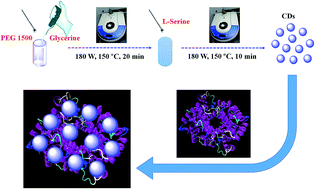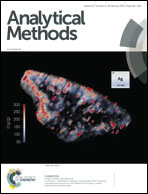Carbon dots-based frequency-doubling scattering probes for the ultrasensitive and highly selective determination of hemoglobin†
Abstract
In this study, a rapid, simple, ultrasensitive, and highly selective probe for hemoglobin (HB) was developed based on fluorescent carbon dots (CDs). The frequency-doubling scattering (FDS) intensity of CDs was significantly increased by HB due to the formation of a ground state complex between CDs and HB. A number of key factors, including excitation wavelength, amount of CDs, pH of phosphate buffer, concentration of NaCl, reaction time, and addition sequence, influencing the analytical performance of CDs in HB determination were investigated thoroughly. Under the optimal conditions, the FDS intensity of CDs was inversely proportional to the concentration of HB ranging from 0.1 nM to 150 nM with a correlation coefficient of 0.9985. The limit of detection for HB was as low as 13 pM (3σ/K), and the relative standard deviation (R.S.D.) for 70 nM HB was 0.18% (n = 5). There was almost no interference from coexisting foreign substances including chemical substances, nucleotides, amino acids, carbohydrates, and proteins including other heme proteins. Consequently, this method was utilized to detect HB in human urine samples and human blood samples with satisfactory results.



 Please wait while we load your content...
Please wait while we load your content...